Terry Odell's Blog, page 280
June 8, 2011
It's About Conflict and Tension 3
Thanks to Phoebe for sharing her thoughts on brainstorming. I could use a good brainstorming partner right now as I'm dealing with a new WIP. And remember: leave a comment on her post for a chance at her giveaway. You have until Friday.
Conflict: the word conjures up images of people fighting. But, as I pointed out in last week's posts on microtension, conflict encompasses a much broader scope.
 When Jay Boyar of Orlando magazine reviewed 4 romance novels, including my FINDING SARAH, he pointed out that in my book, unlike the others, "Sarah and Randy don't, for some strange reason, immediately hate each other."
When Jay Boyar of Orlando magazine reviewed 4 romance novels, including my FINDING SARAH, he pointed out that in my book, unlike the others, "Sarah and Randy don't, for some strange reason, immediately hate each other."
Having hero and heroine not like each other definitely increases conflict and tension. But it's not necessary to take that approach. (Confession: when I started writing FINDING SARAH, I'd never read a romance, so I didn't know about this "hate each other" convention.) Hero and heroine can have a common goal, but with different motivations, and conflict can grow from that.
Example: In FINDING SARAH, both Randy & Sarah want to solve the crime, "Who robbed Sarah's shop?" Randy wants to do it because he's a cop, and that's what he does. Also, the robber seems to be someone he failed to catch on another spree, so his professional pride is at stake. For Sarah, it's a matter of saving her business—her livelihood. As the case progresses, Randy has a new problem: he's violating his own code by taking a personal interest in Sarah. And Sarah is violating her internal promise to be independent and not rely on anyone. But there's no real reason for them to dislike each other.
After FINDING SARAH, I decided to follow convention a bit more closely. In NOWHERE TO HIDE, Colleen and Graham are also trying to solve the same case, although Colleen is no longer a cop. Here, Colleen does take exception to Graham, because she's declared herself finished with cops. Her goal begins as getting him out of her life by beating him at his own game. They learn they'll do better by working together, yet there is still enough going on to keep the tension rising. I had several discussions with my editor who took exception with the way Colleen helped Graham at one point, thus reducing the tension in the scene. BUT, she's an ex-cop, and it would have been out of character for her to withhold evidence, and to me, the character takes priority. And, because I'm always at least half a step out of the box, Graham had absolutely nothing against Colleen from the moment he saw her.
Then, there's the approach that both characters want the same thing but for different reasons. Maybe they both want to buy the same farmhouse. But she wants it because it's where her parents lived, and she wants to restore it. He wants to turn it into a shopping mall. Their actual goal isn't really the farmhouse, it's what they want to do with it, and they're in opposition right away. I haven't written one of these yet.
In WHEN DANGER CALLS, Frankie and Ryan meet by chance, and a lot of the tension comes from them being total opposites in personality. Yet they're not antagonistic. Each of them has an agenda, and while some of their goals end up overlapping, it's not until the friendship is established that they consider the deeper conflicts between them. She's a single mom who's a caring and nurturing person. Ryan's a covert ops specialist. One who had a child die in his arms on a previous mission, so simply tossing Frankie's child onto the page adds conflict for him. Throwing in other issues—Frankie thinks her mother's boyfriend is a crook—can raise the stakes if she needs Ryan's help.
In WHERE DANGER HIDES, I was again starting with more conflict between hero and heroine. He resents her because he's pulled from what he really wants to be doing when his boss assigns him to look into some missing people. She wants his help, but once she sees he's only paying lip service to the assignment, would rather be rid of him. But there's no outright antagonism.
In any of these approaches, there's still going to be the romance/relationship conflict. (Another reason romance, especially romantic suspense, is harder to write than people think. You have to deal with your basic storyline and its conflicts and final resolution, PLUS you have to get the hero and heroine together at the end.)
Conflict: the word conjures up images of people fighting. But, as I pointed out in last week's posts on microtension, conflict encompasses a much broader scope.
 When Jay Boyar of Orlando magazine reviewed 4 romance novels, including my FINDING SARAH, he pointed out that in my book, unlike the others, "Sarah and Randy don't, for some strange reason, immediately hate each other."
When Jay Boyar of Orlando magazine reviewed 4 romance novels, including my FINDING SARAH, he pointed out that in my book, unlike the others, "Sarah and Randy don't, for some strange reason, immediately hate each other."Having hero and heroine not like each other definitely increases conflict and tension. But it's not necessary to take that approach. (Confession: when I started writing FINDING SARAH, I'd never read a romance, so I didn't know about this "hate each other" convention.) Hero and heroine can have a common goal, but with different motivations, and conflict can grow from that.
Example: In FINDING SARAH, both Randy & Sarah want to solve the crime, "Who robbed Sarah's shop?" Randy wants to do it because he's a cop, and that's what he does. Also, the robber seems to be someone he failed to catch on another spree, so his professional pride is at stake. For Sarah, it's a matter of saving her business—her livelihood. As the case progresses, Randy has a new problem: he's violating his own code by taking a personal interest in Sarah. And Sarah is violating her internal promise to be independent and not rely on anyone. But there's no real reason for them to dislike each other.
After FINDING SARAH, I decided to follow convention a bit more closely. In NOWHERE TO HIDE, Colleen and Graham are also trying to solve the same case, although Colleen is no longer a cop. Here, Colleen does take exception to Graham, because she's declared herself finished with cops. Her goal begins as getting him out of her life by beating him at his own game. They learn they'll do better by working together, yet there is still enough going on to keep the tension rising. I had several discussions with my editor who took exception with the way Colleen helped Graham at one point, thus reducing the tension in the scene. BUT, she's an ex-cop, and it would have been out of character for her to withhold evidence, and to me, the character takes priority. And, because I'm always at least half a step out of the box, Graham had absolutely nothing against Colleen from the moment he saw her.
Then, there's the approach that both characters want the same thing but for different reasons. Maybe they both want to buy the same farmhouse. But she wants it because it's where her parents lived, and she wants to restore it. He wants to turn it into a shopping mall. Their actual goal isn't really the farmhouse, it's what they want to do with it, and they're in opposition right away. I haven't written one of these yet.
In WHEN DANGER CALLS, Frankie and Ryan meet by chance, and a lot of the tension comes from them being total opposites in personality. Yet they're not antagonistic. Each of them has an agenda, and while some of their goals end up overlapping, it's not until the friendship is established that they consider the deeper conflicts between them. She's a single mom who's a caring and nurturing person. Ryan's a covert ops specialist. One who had a child die in his arms on a previous mission, so simply tossing Frankie's child onto the page adds conflict for him. Throwing in other issues—Frankie thinks her mother's boyfriend is a crook—can raise the stakes if she needs Ryan's help.
In WHERE DANGER HIDES, I was again starting with more conflict between hero and heroine. He resents her because he's pulled from what he really wants to be doing when his boss assigns him to look into some missing people. She wants his help, but once she sees he's only paying lip service to the assignment, would rather be rid of him. But there's no outright antagonism.
In any of these approaches, there's still going to be the romance/relationship conflict. (Another reason romance, especially romantic suspense, is harder to write than people think. You have to deal with your basic storyline and its conflicts and final resolution, PLUS you have to get the hero and heroine together at the end.)
Published on June 08, 2011 04:00
June 7, 2011
Why I Love Brainstorming
Today my guest is author Phoebe Conn. She began her writing career with Kensington in the 1980s, when historical romances were hugely popular, twice as long as they are now, and half the price! She also wrote several contemporary books with them, and futuristic books as Phoebe Conn and as Cinnamon Burke for Leisure. Phoebe is also having a giveaway to one commenter, so make sure you read through the post.
Thank you so much, Terry, for inviting me to blog.
Whenever I say I'm a writer, I'm always asked where I get my ideas. Each book has it's own story of how it came to be, but my June Samhain romantic suspense release, WHERE DREAMS BEGIN started with a brainstorming session with a poet. On weekends, we'd often leave Los Angeles and drive up to Santa Barbara or Ojai. Resort towns are wonderful places to sit in an outdoor cafe, relax and observe people walking by. The poet looked for intriguing characters for his poems, while I made notes of people's quirks for possible use in my books. A waitress whose ponytail sprouted from the top of her head like a volcano, for example, appears in PARADISE, a book set in Ojai. A waiter who mumbled became a pirate whose orders were unintelligible in my futuristic romance, LADY ROGUE.
We'd also spend time generating plot ideas. The park-like setting of the University of California at Riverside is perfect for brainstorming. One afternoon, we made notes for a story beginning with the protagonist at a crossroads. She's a young widow and can't go back to the life she loved, but what if any choice she makes creates more trouble than she's already in? These were such fun sessions because brainstorming has only one rule: don't evaluate ideas, simply let them flow.
Every book needs an opening that makes an emotional connection with the reader and swiftly draws them into the story. It needs tension that builds with every word to a dramatic and satisfying finish. We brainstormed dynamite openings some days. Other days, we'd work on developing one of our openings to a full story. In one possible book, we had the hero escape the men after him in a diaper service van. It was a great scene, even if it was never used. Now few people use a diaper service, so the scene wouldn't be as easily believed.
I've always loved getting out of my usual routine to brainstorm in a new place. When I was on jury duty in Pasadena, I ate my lunch in the city hall courtyard and thought what a perfect spot it would be for a story with a shy woman who lavishes attention on her garden until someone walks by and tosses a lit cigarette into her prize rose bushes. She might spray him with pesticide, whack him with a hoe, or turn the hose on him. If she lived near the courthouse, he might be an attorney or a judge on his way to an important trial. You may be thinking that's a really silly idea, but I didn't stop to analyze it then. I just wrote it down and it might make its way into a book someday. It doesn't matter if it doesn't.
Brainstorming is exercise for the brain. A new location naturally brings a heightened awareness of surroundings. It also changes the people present from those you pass every day. While riding the metro rail into Los Angeles, I saw a young women with music notes tattooed on her earlobes. I'd never seen anyone tattoo their earlobes, and why quarter notes? Was her boyfriend a musician, or was she one herself? A tiny tattoo on an earlobe might work in a mystery or spy thriller where several people had a tiny piece of an important puzzle hidden in a tattoo. The possibilities are endless. Would I have thought of them had I been at home brainstorming on my patio with a cat sleeping in my lap? Probably not.
Writers need to live interesting lives to write compelling stories people want to read. Everyone needs an interesting life, don't they? How could you change your routine? Let's say you got up earlier and saw a neighbor you'd never met, and…. Oh well, that's a story for another time.
As for her giveaway: Phoebe will send a pdf copy of WHERE DREAMS BEGIN to anyone who comments. Have you ever brainstormed ideas? Do you love having an excuse to go new places to think? Winner announced this weekend.
For more about Phoebe and her books, you can visit her website.
Thank you so much, Terry, for inviting me to blog.
Whenever I say I'm a writer, I'm always asked where I get my ideas. Each book has it's own story of how it came to be, but my June Samhain romantic suspense release, WHERE DREAMS BEGIN started with a brainstorming session with a poet. On weekends, we'd often leave Los Angeles and drive up to Santa Barbara or Ojai. Resort towns are wonderful places to sit in an outdoor cafe, relax and observe people walking by. The poet looked for intriguing characters for his poems, while I made notes of people's quirks for possible use in my books. A waitress whose ponytail sprouted from the top of her head like a volcano, for example, appears in PARADISE, a book set in Ojai. A waiter who mumbled became a pirate whose orders were unintelligible in my futuristic romance, LADY ROGUE.
We'd also spend time generating plot ideas. The park-like setting of the University of California at Riverside is perfect for brainstorming. One afternoon, we made notes for a story beginning with the protagonist at a crossroads. She's a young widow and can't go back to the life she loved, but what if any choice she makes creates more trouble than she's already in? These were such fun sessions because brainstorming has only one rule: don't evaluate ideas, simply let them flow.
Every book needs an opening that makes an emotional connection with the reader and swiftly draws them into the story. It needs tension that builds with every word to a dramatic and satisfying finish. We brainstormed dynamite openings some days. Other days, we'd work on developing one of our openings to a full story. In one possible book, we had the hero escape the men after him in a diaper service van. It was a great scene, even if it was never used. Now few people use a diaper service, so the scene wouldn't be as easily believed.
I've always loved getting out of my usual routine to brainstorm in a new place. When I was on jury duty in Pasadena, I ate my lunch in the city hall courtyard and thought what a perfect spot it would be for a story with a shy woman who lavishes attention on her garden until someone walks by and tosses a lit cigarette into her prize rose bushes. She might spray him with pesticide, whack him with a hoe, or turn the hose on him. If she lived near the courthouse, he might be an attorney or a judge on his way to an important trial. You may be thinking that's a really silly idea, but I didn't stop to analyze it then. I just wrote it down and it might make its way into a book someday. It doesn't matter if it doesn't.
Brainstorming is exercise for the brain. A new location naturally brings a heightened awareness of surroundings. It also changes the people present from those you pass every day. While riding the metro rail into Los Angeles, I saw a young women with music notes tattooed on her earlobes. I'd never seen anyone tattoo their earlobes, and why quarter notes? Was her boyfriend a musician, or was she one herself? A tiny tattoo on an earlobe might work in a mystery or spy thriller where several people had a tiny piece of an important puzzle hidden in a tattoo. The possibilities are endless. Would I have thought of them had I been at home brainstorming on my patio with a cat sleeping in my lap? Probably not.
Writers need to live interesting lives to write compelling stories people want to read. Everyone needs an interesting life, don't they? How could you change your routine? Let's say you got up earlier and saw a neighbor you'd never met, and…. Oh well, that's a story for another time.
As for her giveaway: Phoebe will send a pdf copy of WHERE DREAMS BEGIN to anyone who comments. Have you ever brainstormed ideas? Do you love having an excuse to go new places to think? Winner announced this weekend.
For more about Phoebe and her books, you can visit her website.
Published on June 07, 2011 05:00
June 6, 2011
Just Because it's True…
What I'm reading: Chasing Fire, by Nora Roberts
Have you checked the Deals & Steals tab lately? Some deals expire soon. Don't miss out.
Back when I was just starting to learn the craft of writing, I had a live critique group (The Pregnant Pigs—don't ask how the name came into being, as all of us were beyond child-bearing years). The others in the group were going back to school as part of a local college program for adults looking to change direction in life. These wonderful women were all studying writing. I hooked up with one through my volunteer training for the Adult Literacy League, and she invited me to join the group. I felt as though I was getting a free education as they were quick to share what they had learned (especially when critiquing my chapters).
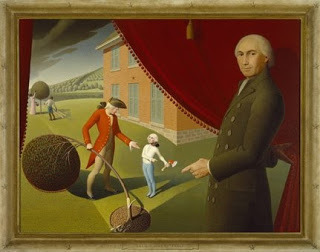 At any rate, one of their professors used to say, "Just because it's true doesn't make it good." They would throw this in my face when I'd try to justify something I'd written with, "but it really happened."
At any rate, one of their professors used to say, "Just because it's true doesn't make it good." They would throw this in my face when I'd try to justify something I'd written with, "but it really happened."
One of the things I'm teaching in my dialogue class right now is that although dialogue has to sound like real speech, it isn't really "real" speech. Transcribing actual conversations won't work for writing.
Another place where "real" doesn't necessarily work is coincidences. They do happen, but they're problematic when plotting your story.
Characters have to meet. Plot threads have to entwine. Things have to happen to move the plot forward. Often, as authors, we're stretching reader credibility with the way we choose to have things happen. In books, the sorts of coincidences that seem to play out as normal parts of our lives can come across as contrived in fiction.
Examples: Once, years ago, Hubster and I were in New Orleans standing in line outside a restaurant that didn't take reservations. When tables opened up, someone would come outside and say, "Party of four?" or whatever the size of the table. The "Party of two?" calls were few and far between. So, when the next call for a party of four came, the couple behind us asked if we'd like to say we were a foursome and at least get into the restaurant a lot sooner. Being hungry, we agreed.
Once inside, we dealt with the usual "we're total strangers but now are having dinner together, so we ought to introduce ourselves." They said they were from Missoula, Montana. Hubster said he'd been there for a meeting, and there were a few chit-chat moments as common ground was covered. Then, we said we were from Miami. The gentleman started in on the, "Oh, I know someone from Miami…" line, and my immediate thought was … "Do you know how big Miami is, and how many people live there?" But he proceeded to tell us he'd gone to med school with someone who had a pediatric practice in Miami, and it turned out to be our son's pediatrician.
Could I have written that? Probably not.
Or, the time we traveled to my mother's birthplace (formerly Danzig) and she found that a woman who'd written a book on surviving the Holocaust, who also came from Danzig (although my mother didn't know her then, but given that connection, they began an internet friendship) was going to be there showing some of her younger relatives around. My mother arranged for us all to meet for dinner one night. Cutting to the chase, when we lived in Miami, my husband worked with one of the relatives this woman was showing around.
Could I have written that? Probably not.
Or yesterday, when we went to our usual coffee house for Sunday breakfast. It's a friendly place, and we struck up a conversation. They'd never been to the place, and "Where are you from?" is a typical question. Not only were they from Divide, but they live in our subdivision.
But, when we're writing, we have to work to make sure coincidences aren't on the page for convenience. Yes, they happen, but it's the author's job to make them seem "Good" as well as "True."
**image: Parson Weems' Fable by Grant Wood, Amon Carter Museum, Fort Worth, Texas
Tomorrow, my guest is author Phoebe Conn, who's going to talk about brainstorming. In addition, she's giving away a book, so please come back and make her feel at home.
Have you checked the Deals & Steals tab lately? Some deals expire soon. Don't miss out.
Back when I was just starting to learn the craft of writing, I had a live critique group (The Pregnant Pigs—don't ask how the name came into being, as all of us were beyond child-bearing years). The others in the group were going back to school as part of a local college program for adults looking to change direction in life. These wonderful women were all studying writing. I hooked up with one through my volunteer training for the Adult Literacy League, and she invited me to join the group. I felt as though I was getting a free education as they were quick to share what they had learned (especially when critiquing my chapters).
 At any rate, one of their professors used to say, "Just because it's true doesn't make it good." They would throw this in my face when I'd try to justify something I'd written with, "but it really happened."
At any rate, one of their professors used to say, "Just because it's true doesn't make it good." They would throw this in my face when I'd try to justify something I'd written with, "but it really happened."One of the things I'm teaching in my dialogue class right now is that although dialogue has to sound like real speech, it isn't really "real" speech. Transcribing actual conversations won't work for writing.
Another place where "real" doesn't necessarily work is coincidences. They do happen, but they're problematic when plotting your story.
Characters have to meet. Plot threads have to entwine. Things have to happen to move the plot forward. Often, as authors, we're stretching reader credibility with the way we choose to have things happen. In books, the sorts of coincidences that seem to play out as normal parts of our lives can come across as contrived in fiction.
Examples: Once, years ago, Hubster and I were in New Orleans standing in line outside a restaurant that didn't take reservations. When tables opened up, someone would come outside and say, "Party of four?" or whatever the size of the table. The "Party of two?" calls were few and far between. So, when the next call for a party of four came, the couple behind us asked if we'd like to say we were a foursome and at least get into the restaurant a lot sooner. Being hungry, we agreed.
Once inside, we dealt with the usual "we're total strangers but now are having dinner together, so we ought to introduce ourselves." They said they were from Missoula, Montana. Hubster said he'd been there for a meeting, and there were a few chit-chat moments as common ground was covered. Then, we said we were from Miami. The gentleman started in on the, "Oh, I know someone from Miami…" line, and my immediate thought was … "Do you know how big Miami is, and how many people live there?" But he proceeded to tell us he'd gone to med school with someone who had a pediatric practice in Miami, and it turned out to be our son's pediatrician.
Could I have written that? Probably not.
Or, the time we traveled to my mother's birthplace (formerly Danzig) and she found that a woman who'd written a book on surviving the Holocaust, who also came from Danzig (although my mother didn't know her then, but given that connection, they began an internet friendship) was going to be there showing some of her younger relatives around. My mother arranged for us all to meet for dinner one night. Cutting to the chase, when we lived in Miami, my husband worked with one of the relatives this woman was showing around.
Could I have written that? Probably not.
Or yesterday, when we went to our usual coffee house for Sunday breakfast. It's a friendly place, and we struck up a conversation. They'd never been to the place, and "Where are you from?" is a typical question. Not only were they from Divide, but they live in our subdivision.
But, when we're writing, we have to work to make sure coincidences aren't on the page for convenience. Yes, they happen, but it's the author's job to make them seem "Good" as well as "True."
**image: Parson Weems' Fable by Grant Wood, Amon Carter Museum, Fort Worth, Texas
Tomorrow, my guest is author Phoebe Conn, who's going to talk about brainstorming. In addition, she's giving away a book, so please come back and make her feel at home.
Published on June 06, 2011 04:00
June 4, 2011
Bargains
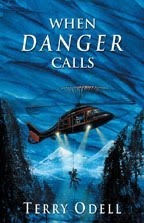
With the release of DANGER IN DEER RIDGE, I've lowered the price of the first Blackthorne, Inc. book, WHEN DANGER CALLS, to 99 cents. Check the Deals and Steals page for purchase information.
If someone asks single mother Frankie Castor to clear a room, she'll smile and find a vacuum cleaner. Ryan Harper uses a gun. Can they work together when their lives depend on it?
Frankie's returned to her childhood home in Montana to help care for her mother. Her biggest worries are balancing the budget and the upkeep of an aging home. When she offers a man a ride home from the hospital, she never imagines she'll end up having to choose between her daughter's life and matters of national security that could cost the lives of millions.
Ryan returns to his family home to find a way to prove he didn't leak vital information on a covert ops mission gone south. As he searches for the meaning of a file he's kept hidden from the mission, he has no idea that international mercenaries have been searching for it—and him. When the mercenaries come after Ryan, he's torn. Fighting for his country wars with fighting to rescue people he loves.
Set against a Montana mountain backdrop, When Danger Calls is a story filled with action, adventure, and romance, where the stakes keep getting higher and higher.
Published on June 04, 2011 06:16
June 3, 2011
Friday Field Trip: Mollie Kathleen 2
As promised last week, here's what the area around the Mollie Kathleen mine in Cripple Creek looks like.
And it's my day at the Author Expressions blog, where I'll be talking about setting.
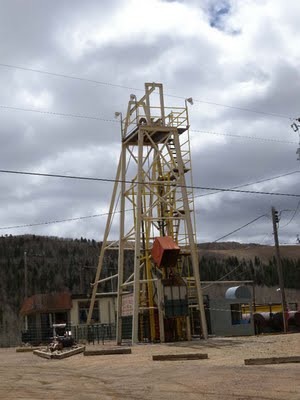
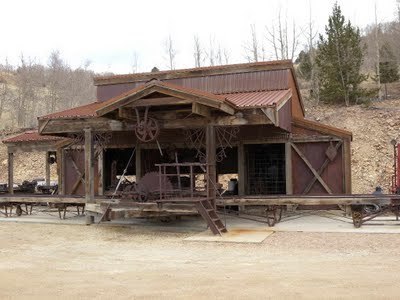


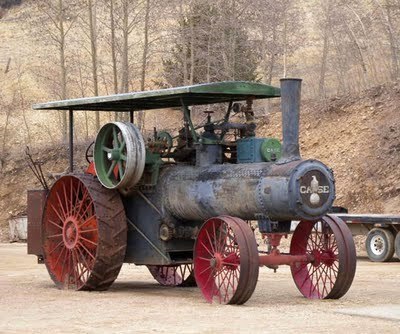
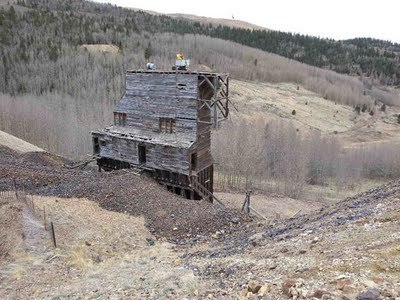
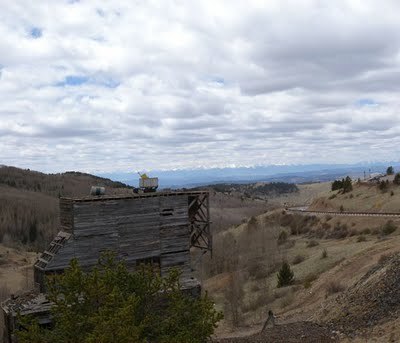


And it's my day at the Author Expressions blog, where I'll be talking about setting.








Published on June 03, 2011 04:00
June 2, 2011
It's About Conflict and Tension 2
What I'm reading: Sweet Nothings, by Catherine Anderson
Yesterday, I showed how I attempted to keep the reader interested in my first scene of DANGER IN DEER RIDGE. I'm continuing that today with some analysis of the second scene, where we get to go inside Grinch's head. By having 2 POV characters, you have more opportunities for tension, as the reader begins to see more than either character can. I normally limit myself to only 2 POV characters, but in this book I actually added a third--the villain, which can also increase tension as neither hero or heroine knows what's going on in his head.
In this section, rather than snip and just leave the paragraphs I explained, I decided to leave everything there so you can follow the flow of the scene.
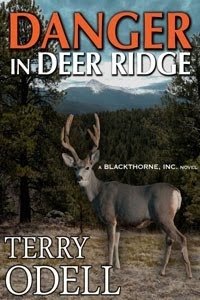 Grinch peeked through the passenger window of his pickup, reassuring himself that Dylan would stay asleep for the few moments it would take to get the gas flowing. The bumpy ride down the steep, pothole-filled driveway would have woken him up for sure. Besides, Chester was with him, and nobody would approach the truck with that mutt standing guard. He gave the window a soft pat, then headed toward the house. We can't have TSTL heroes. This paragraph shows Grinch dealing with his immediate conflict—getting the gas turned on for Elizabeth while his young son is with him. (And in order to make it work, I had to stick in the dog, which became yet another character to keep track of! But it turned out he was a welcome addition.)
Grinch peeked through the passenger window of his pickup, reassuring himself that Dylan would stay asleep for the few moments it would take to get the gas flowing. The bumpy ride down the steep, pothole-filled driveway would have woken him up for sure. Besides, Chester was with him, and nobody would approach the truck with that mutt standing guard. He gave the window a soft pat, then headed toward the house. We can't have TSTL heroes. This paragraph shows Grinch dealing with his immediate conflict—getting the gas turned on for Elizabeth while his young son is with him. (And in order to make it work, I had to stick in the dog, which became yet another character to keep track of! But it turned out he was a welcome addition.)
It had been obvious that he'd frightened the Parker woman, and not by showing up unannounced. She had that trapped-animal demeanor. What's her story? He wandered around her car. Layers of road dirt. California plates. Tires in decent shape, but if this was her only vehicle, she was going to have some trouble once the snows hit. Sooner if she didn't get the driveway repaired and graded. Glimpse into Grinch's character. He cares about people.
He checked the pickup again, Dylan's red hair clearly visible against the passenger side window. Was he moving? Waking up? Damn, what was taking that woman so long? He needed to get Dylan home. Hell, he could have had the line opened and been gone by now. Microtension again – he's there to do his job, but there's an obstacle; he has to wait for Elizabeth's return.
He eyed the house. The front door opened, and the Parker woman trotted down the porch steps. At last. He strode toward her, trying to replace his impatience with a reassuring smile.
"I'm sorry to keep you waiting," she said. "I verified that Rhonda sent you. Thanks for stopping by."
"Understood, ma'am," he said. "This day and age, it pays to be careful. Although you'll find most folks around here are friendly."
"Will it take long?" she asked.
"Not at all. I'll open the main line to the house, then make sure everything works for you."
"I'll leave you to it." She disappeared into the house like a prairie dog into its den.
He opened the line, then jogged toward her door. She must have been watching, because the door opened when he hit the first wooden porch step.
"You're finished?" she asked. He noticed her round, blue eyes. Eyes that kept darting glances toward the house. "So we'll have hot water and heat?" He notices her uneasy behavior. The reader knows why, but he doesn't yet.
"Show me to the furnace and water heater, and I'll fire them up for you."
"Um…I'm not sure where they are. Basement, I guess."
He forced a smile. "Either that or the garage. I'll find 'em."
"Can I try the stove?"
"Sure. Give it a shot."
She stepped in that direction, then stopped. "Um … it's not going to explode, is it?"
He restrained himself from pushing past her. "Shouldn't. Here, let me." He twisted the knobs, hearing the pop as the ignition system kicked in. Seconds later, blue flames flickered below each burner. To this point, his conflict is simple: hurry to get the job done and get back to his son. Obstacles in his way are minor.
He was about to check the oven when the sound of a dog's frantic barking chilled his blood. Chester. He whirled and raced to the door, flinging it open. The spotted mutt raced circles around Dylan, who was stumbling down the drive. Stakes are raised here
"Dylan!" Grinch leaped off the porch and sprinted across the gravel, dodging potholes. "I told you to stay in the truck." He grabbed the child.
Dylan sniffled. "I'm sorry. But I—" Then he threw up what appeared to be three times the volume of what his little stomach could hold. What had Mrs. Bridger fed him? She had a reputation as a reliable sitter, and Grinch had been grateful she'd agreed to take Dylan at the last minute, but maybe it hadn't been a smart move. Establishes that he's not a terrible parent, but he's doubting the wisdom of his choice.
"It's all right, Dyl. It's all right. You'll be okay," Grinch said, ignoring the stench and the mess. He rubbed the boy's back and held his head.
"I'm sorry, I tried to be good." His tears returned, along with shuddering sobs. "I sicked in the truck too."
"What's going on?"
Grinch turned to see the Parker woman, hands on her hips, a scowl on her face. He sat on the ground, pulling Dylan into his lap. "Sorry. Dylan—I thought he'd be okay for a few minutes—your place was on the way—Rhonda said it was a rush job—I didn't—"
The woman crouched by his side, running her fingers through Dylan's sweat-soaked hair, touching his forehead. "My God, he's burning up. What kind of a person are you, leaving a child alone in the first place, not to mention a sick one." Elizabeth's reaction adds more tension to the scene. As I mentioned yesterday, her reason for leaving her husband was to protect her son. What she is seeing is a neglectful parent, which adds some conflict between her and Grinch.
"Dylan was asleep. I didn't know he was sick. And Chester was with him," Grinch said, the words not out of his mouth before he realized how stupid they sounded.
"Chester?" She whirled her head around, fingers curled into fists.
"Dog," he said.
She scanned the yard where Chester was now performing the obligatory sniffing routine. Apparently satisfied there was no additional threat, her posture relaxed. "You might as well come in and get cleaned up. Should you call your pediatrician?"
"I...we…don't have one. I didn't know Dylan was sick."
She was already marching toward the house. Grinch scooped up Dylan and followed. Damn, the kid was burning up. Some father he was turning out to be. With "was turning out to be" we see hints as to why Grinch hasn't been Father of the Year material, yet the story isn't stopped for an info dump of back story.
Both this post and yesterday's are snipped from Chapter 1 of Danger in Deer Ridge. The entire chapter is available on my website. I hope some of my running commentary was helpful.
I'll be back tomorrow with another Friday Field Trip.
Yesterday, I showed how I attempted to keep the reader interested in my first scene of DANGER IN DEER RIDGE. I'm continuing that today with some analysis of the second scene, where we get to go inside Grinch's head. By having 2 POV characters, you have more opportunities for tension, as the reader begins to see more than either character can. I normally limit myself to only 2 POV characters, but in this book I actually added a third--the villain, which can also increase tension as neither hero or heroine knows what's going on in his head.
In this section, rather than snip and just leave the paragraphs I explained, I decided to leave everything there so you can follow the flow of the scene.
 Grinch peeked through the passenger window of his pickup, reassuring himself that Dylan would stay asleep for the few moments it would take to get the gas flowing. The bumpy ride down the steep, pothole-filled driveway would have woken him up for sure. Besides, Chester was with him, and nobody would approach the truck with that mutt standing guard. He gave the window a soft pat, then headed toward the house. We can't have TSTL heroes. This paragraph shows Grinch dealing with his immediate conflict—getting the gas turned on for Elizabeth while his young son is with him. (And in order to make it work, I had to stick in the dog, which became yet another character to keep track of! But it turned out he was a welcome addition.)
Grinch peeked through the passenger window of his pickup, reassuring himself that Dylan would stay asleep for the few moments it would take to get the gas flowing. The bumpy ride down the steep, pothole-filled driveway would have woken him up for sure. Besides, Chester was with him, and nobody would approach the truck with that mutt standing guard. He gave the window a soft pat, then headed toward the house. We can't have TSTL heroes. This paragraph shows Grinch dealing with his immediate conflict—getting the gas turned on for Elizabeth while his young son is with him. (And in order to make it work, I had to stick in the dog, which became yet another character to keep track of! But it turned out he was a welcome addition.) It had been obvious that he'd frightened the Parker woman, and not by showing up unannounced. She had that trapped-animal demeanor. What's her story? He wandered around her car. Layers of road dirt. California plates. Tires in decent shape, but if this was her only vehicle, she was going to have some trouble once the snows hit. Sooner if she didn't get the driveway repaired and graded. Glimpse into Grinch's character. He cares about people.
He checked the pickup again, Dylan's red hair clearly visible against the passenger side window. Was he moving? Waking up? Damn, what was taking that woman so long? He needed to get Dylan home. Hell, he could have had the line opened and been gone by now. Microtension again – he's there to do his job, but there's an obstacle; he has to wait for Elizabeth's return.
He eyed the house. The front door opened, and the Parker woman trotted down the porch steps. At last. He strode toward her, trying to replace his impatience with a reassuring smile.
"I'm sorry to keep you waiting," she said. "I verified that Rhonda sent you. Thanks for stopping by."
"Understood, ma'am," he said. "This day and age, it pays to be careful. Although you'll find most folks around here are friendly."
"Will it take long?" she asked.
"Not at all. I'll open the main line to the house, then make sure everything works for you."
"I'll leave you to it." She disappeared into the house like a prairie dog into its den.
He opened the line, then jogged toward her door. She must have been watching, because the door opened when he hit the first wooden porch step.
"You're finished?" she asked. He noticed her round, blue eyes. Eyes that kept darting glances toward the house. "So we'll have hot water and heat?" He notices her uneasy behavior. The reader knows why, but he doesn't yet.
"Show me to the furnace and water heater, and I'll fire them up for you."
"Um…I'm not sure where they are. Basement, I guess."
He forced a smile. "Either that or the garage. I'll find 'em."
"Can I try the stove?"
"Sure. Give it a shot."
She stepped in that direction, then stopped. "Um … it's not going to explode, is it?"
He restrained himself from pushing past her. "Shouldn't. Here, let me." He twisted the knobs, hearing the pop as the ignition system kicked in. Seconds later, blue flames flickered below each burner. To this point, his conflict is simple: hurry to get the job done and get back to his son. Obstacles in his way are minor.
He was about to check the oven when the sound of a dog's frantic barking chilled his blood. Chester. He whirled and raced to the door, flinging it open. The spotted mutt raced circles around Dylan, who was stumbling down the drive. Stakes are raised here
"Dylan!" Grinch leaped off the porch and sprinted across the gravel, dodging potholes. "I told you to stay in the truck." He grabbed the child.
Dylan sniffled. "I'm sorry. But I—" Then he threw up what appeared to be three times the volume of what his little stomach could hold. What had Mrs. Bridger fed him? She had a reputation as a reliable sitter, and Grinch had been grateful she'd agreed to take Dylan at the last minute, but maybe it hadn't been a smart move. Establishes that he's not a terrible parent, but he's doubting the wisdom of his choice.
"It's all right, Dyl. It's all right. You'll be okay," Grinch said, ignoring the stench and the mess. He rubbed the boy's back and held his head.
"I'm sorry, I tried to be good." His tears returned, along with shuddering sobs. "I sicked in the truck too."
"What's going on?"
Grinch turned to see the Parker woman, hands on her hips, a scowl on her face. He sat on the ground, pulling Dylan into his lap. "Sorry. Dylan—I thought he'd be okay for a few minutes—your place was on the way—Rhonda said it was a rush job—I didn't—"
The woman crouched by his side, running her fingers through Dylan's sweat-soaked hair, touching his forehead. "My God, he's burning up. What kind of a person are you, leaving a child alone in the first place, not to mention a sick one." Elizabeth's reaction adds more tension to the scene. As I mentioned yesterday, her reason for leaving her husband was to protect her son. What she is seeing is a neglectful parent, which adds some conflict between her and Grinch.
"Dylan was asleep. I didn't know he was sick. And Chester was with him," Grinch said, the words not out of his mouth before he realized how stupid they sounded.
"Chester?" She whirled her head around, fingers curled into fists.
"Dog," he said.
She scanned the yard where Chester was now performing the obligatory sniffing routine. Apparently satisfied there was no additional threat, her posture relaxed. "You might as well come in and get cleaned up. Should you call your pediatrician?"
"I...we…don't have one. I didn't know Dylan was sick."
She was already marching toward the house. Grinch scooped up Dylan and followed. Damn, the kid was burning up. Some father he was turning out to be. With "was turning out to be" we see hints as to why Grinch hasn't been Father of the Year material, yet the story isn't stopped for an info dump of back story.
Both this post and yesterday's are snipped from Chapter 1 of Danger in Deer Ridge. The entire chapter is available on my website. I hope some of my running commentary was helpful.
I'll be back tomorrow with another Friday Field Trip.
Published on June 02, 2011 04:00
June 1, 2011
It's About Conflict and Tension
Thanks to Lilian Stewart Carl for sharing all that information about kilts yesterday. I learned a lot. If you didn't read her post, you definitely need to scroll down.
When I wrote Monday's post, on why I decided to go indie with DANGER IN DEER RIDGE, I had several people email me asking me why I didn't put up more about the book itself.
Interesting question. First, although I definitely want people to buy my books, I've kind of had this "no self-promotion" rule about this blog. I did include links to my website for blurb and first chapter, as well as buy links, so that the information was available for those who wanted to look. And if you missed it, you can find it here.
 More in keeping with the focus of this blog, I thought I'd provide a little more of a behind the scenes peek at the writing process. Donald Maass suggests there be tension on every page, and microtension in every paragraph. Characters have to want something, and there need to be reasons why they can't have it. There needs to be conflict.
More in keeping with the focus of this blog, I thought I'd provide a little more of a behind the scenes peek at the writing process. Donald Maass suggests there be tension on every page, and microtension in every paragraph. Characters have to want something, and there need to be reasons why they can't have it. There needs to be conflict.
Under the broad umbrella of all romance sub-genres, one critical element is the first meet between hero and heroine. So, I thought I'd share some of the first meet scene from DANGER IN DEER RIDGE with you, and mark it up with how I tried to create tension and conflict. In this scene, the heroine has a clear goal: start her new life. She's just arrived at her new home with her eight-year-old son. Making sure he's safe is her top priority.
She filled the pot with water, then set it on the burner. Checking the unfamiliar gas range, she matched the knob with the appropriate burner and twisted it. Nothing. She waited. Tried again. Was she supposed to light the burner with a match? Where was the instruction book? She yanked open drawers hoping to find one. Nothing. Conflict: without gas, she can't cook.
Taking a calming breath, she twisted the knob again, leaning forward to listen for the hiss of gas. Still nothing. She sniffed. Nope.
Great. Grace's Realtor had promised the rented house was move-in ready. Elizabeth ran the water in the sink. After several minutes, it hadn't warmed. These 2 paragraphs show her trying to figure out the problem.
Stop. Think. Lights work. Refrigerator works. Those were electric. The stove was gas, and she suspected the water heater was as well. Heat? The sun streamed in, and she hadn't noticed a chill in the place. But if the heat wasn't working, it would get cold once the sun went down. The Colorado mountains weren't known for sultry nights in June. Increased conflict: She needs heat, too.
Biting back a curse, she dried her hands and went to the car for her rudimentary tool kit. She'd picked up a few skills helping Miri keep Galloway House running, but she was more of a tool passer than a Ms. Fixit. Would she know a gas line if she tripped over it?
Become more self-sufficient. Another thing to add to her growing "To Do" list. Attempting to solve her own problems to solve her problems and meet her own goals.
She popped the trunk and reached in for the red metal case. The sound of footfalls behind her had her jerking upward, slamming her head into the edge of the trunk. She forced herself to move slowly. Increasing tension; she's on the run, trying to avoid people. To add conflict—get another person onto the page.
Ignore the pain. Keep both hands free. Did she have time to open the chest and grab something heavy? Wasn't there one of those tire-changing things lying in the trunk? Trying not to be obvious, she groped along the carpet-lined space. Again, trying to solve her own problems.
"Ms. Parker?" A deep male voice conjured images of a linebacker-sized hit man. But why would a hit man use her new name? Her mind whirled. The voice wasn't Victor's. If Victor sent some thug, wouldn't he be asking for Julie Ann? Who other than Grace and a Realtor she'd never met face-to-face knew she was here? The Realtor was a woman. Should she admit to being Elizabeth Parker? Words such as 'hit man' show her fear that someone might find her. We know someone named Victor wants her. Internal monologue gives reader a peek into her fears.
And then a thought surpassed all others.
Will's alone in the house. Tension increased. Stakes raised. It's now her son's safety as well as hers.
Her fingers wrapped around cool metal. Barely registering its four-sided shape, she hefted it. Heavy enough to do some damage. Awkward to conceal. She half-turned, keeping her head down.
He cleared his throat. "Sorry I'm late. I'm here to turn on the gas." A break in the tension. She's getting what she wants.
I'll continue this one tomorrow.
When I wrote Monday's post, on why I decided to go indie with DANGER IN DEER RIDGE, I had several people email me asking me why I didn't put up more about the book itself.
Interesting question. First, although I definitely want people to buy my books, I've kind of had this "no self-promotion" rule about this blog. I did include links to my website for blurb and first chapter, as well as buy links, so that the information was available for those who wanted to look. And if you missed it, you can find it here.
 More in keeping with the focus of this blog, I thought I'd provide a little more of a behind the scenes peek at the writing process. Donald Maass suggests there be tension on every page, and microtension in every paragraph. Characters have to want something, and there need to be reasons why they can't have it. There needs to be conflict.
More in keeping with the focus of this blog, I thought I'd provide a little more of a behind the scenes peek at the writing process. Donald Maass suggests there be tension on every page, and microtension in every paragraph. Characters have to want something, and there need to be reasons why they can't have it. There needs to be conflict. Under the broad umbrella of all romance sub-genres, one critical element is the first meet between hero and heroine. So, I thought I'd share some of the first meet scene from DANGER IN DEER RIDGE with you, and mark it up with how I tried to create tension and conflict. In this scene, the heroine has a clear goal: start her new life. She's just arrived at her new home with her eight-year-old son. Making sure he's safe is her top priority.
She filled the pot with water, then set it on the burner. Checking the unfamiliar gas range, she matched the knob with the appropriate burner and twisted it. Nothing. She waited. Tried again. Was she supposed to light the burner with a match? Where was the instruction book? She yanked open drawers hoping to find one. Nothing. Conflict: without gas, she can't cook.
Taking a calming breath, she twisted the knob again, leaning forward to listen for the hiss of gas. Still nothing. She sniffed. Nope.
Great. Grace's Realtor had promised the rented house was move-in ready. Elizabeth ran the water in the sink. After several minutes, it hadn't warmed. These 2 paragraphs show her trying to figure out the problem.
Stop. Think. Lights work. Refrigerator works. Those were electric. The stove was gas, and she suspected the water heater was as well. Heat? The sun streamed in, and she hadn't noticed a chill in the place. But if the heat wasn't working, it would get cold once the sun went down. The Colorado mountains weren't known for sultry nights in June. Increased conflict: She needs heat, too.
Biting back a curse, she dried her hands and went to the car for her rudimentary tool kit. She'd picked up a few skills helping Miri keep Galloway House running, but she was more of a tool passer than a Ms. Fixit. Would she know a gas line if she tripped over it?
Become more self-sufficient. Another thing to add to her growing "To Do" list. Attempting to solve her own problems to solve her problems and meet her own goals.
She popped the trunk and reached in for the red metal case. The sound of footfalls behind her had her jerking upward, slamming her head into the edge of the trunk. She forced herself to move slowly. Increasing tension; she's on the run, trying to avoid people. To add conflict—get another person onto the page.
Ignore the pain. Keep both hands free. Did she have time to open the chest and grab something heavy? Wasn't there one of those tire-changing things lying in the trunk? Trying not to be obvious, she groped along the carpet-lined space. Again, trying to solve her own problems.
"Ms. Parker?" A deep male voice conjured images of a linebacker-sized hit man. But why would a hit man use her new name? Her mind whirled. The voice wasn't Victor's. If Victor sent some thug, wouldn't he be asking for Julie Ann? Who other than Grace and a Realtor she'd never met face-to-face knew she was here? The Realtor was a woman. Should she admit to being Elizabeth Parker? Words such as 'hit man' show her fear that someone might find her. We know someone named Victor wants her. Internal monologue gives reader a peek into her fears.
And then a thought surpassed all others.
Will's alone in the house. Tension increased. Stakes raised. It's now her son's safety as well as hers.
Her fingers wrapped around cool metal. Barely registering its four-sided shape, she hefted it. Heavy enough to do some damage. Awkward to conceal. She half-turned, keeping her head down.
He cleared his throat. "Sorry I'm late. I'm here to turn on the gas." A break in the tension. She's getting what she wants.
I'll continue this one tomorrow.
Published on June 01, 2011 04:00
May 31, 2011
Real Men Wear Kilts
Today, I'm welcoming author Lillian Stewart Carl to Terry's Place. You can not only tell by Lillian's red hair and newt-like complexion that she's a descendent of Scots, you can tell by her ears, which appreciate bagpipes, her tongue, which appreciates haggis, and her eyes, which appreciate men in kilts. Since she also inherited the Celtic gift of gab, she writes about kilts, too.
No, a man wearing a kilt is not wearing a skirt. Some men will loudly say so, because, after all, to accuse another man of being feminine is a horrible insult. But these jokers are both culturally dyslexic and jealous. Women flock to the male of the Scottish species in his colorful plumage.
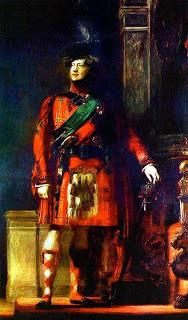 Of all the jokes about kilts, my favorite is: What's worn beneath the kilt? Nothing. It's all in fine working order!
Of all the jokes about kilts, my favorite is: What's worn beneath the kilt? Nothing. It's all in fine working order!
Yes, traditionally the kilted Scot wore no undergarments. "Going commando" is what it's called today. No, it's not required.
The original Highlander started out with a knee-length shirt, then wound yard after yard of wool cloth around his body and draped the end over his shoulder. Since he spent days clambering up and down icy rock- and heather-strewn slopes, it was helpful having clothing, blanket, and pup-tent in one package.
The bulkiness of the "great kilt" was why Scots warriors would wear only their shirts when charging down on an enemy. They didn't paint themselves blue, although all those newt-like complexions no doubt turned blue from the cold.
The so called "small kilt" probably dates to the eighteenth century. One myth claims it was invented by an English factory owner. He didn't want his wage-slaves' all-in-one garments caught up in the machinery and so had them cut off the upper part and wear only the fabric wrapping the hips.
As I say, that's myth.
Another myth, that specific tartan setts or patterns were assigned to specific clans, dates only to the early nineteenth century, when two amiable charlatans claiming to be descended from Bonnie Prince Charlie more or less invented the concept from (sorry) whole cloth.
In reality, early tartans were colored by local plant dyes and woven to patterns popular in a particular area—and certain names also occurred in particular areas.
During the same time period, Sir Walter Scott helped popularize the tartanalia that fills any Scottish souvenir shop. Even King George IV appeared in Edinburgh draped in flesh-colored tights, kilt, and plaid—the plaid being the fabric worn over the shoulder, not a synonym for "tartan". Whether this made up for his immediate ancestors doing their best to commit genocide on the Scots is open to debate.
George's niece Victoria fell hard for the romantic illusions of Scotland, and made Balmoral Castle a favorite retreat of the royal family. Today the men appear wearing kilts with, supposedly, weights sewn into the hems. Those Scottish winds, you know....
That Victoria had hardly any Scottish corpuscles in her body just proves that home is not only where the heart is, it's where the kilt is.
A modern-day kilt is meticulously constructed, the tartan sett matched across the pleats, the length gauged to mid-knee. It's not just for pipe bands and formal events. Many a man wears a T-shirt above and boots below his kilt, to good effect. It's the one garment that suits any male body.
Nowadays there's even the utilikilt, in canvas or camo, with its pockets and rivets the equivalent of jeans.
 The swing and sway of a kilt, pleats dancing, is the lilt of Scottish music and the Scottish accent. The only time I will walk several paces behind my husband is when he's wearing his kilt, all the better to enjoy the view.
The swing and sway of a kilt, pleats dancing, is the lilt of Scottish music and the Scottish accent. The only time I will walk several paces behind my husband is when he's wearing his kilt, all the better to enjoy the view.
Michael Campbell in the romantic suspense novel Dust to Dust, Alasdair Cameron in the mystery series that begins with The Secret Portrait, James Grant and Malcolm Grant in the paranormal romance Shadows in Scarlet—they all know that the kilt is an accessory to die for. Sometimes, in my stories, literally.
Lillian's novels and short stories are available in multiple print and electronic versions. For details, please visit her website at www.lillianstewartcarl.com. She'll be attending the Texas Scottish Festival (www.texasscottishfestival.com) June 3rd-5th, listening to music and eyeing kilts. If you'll be there, ask for her at the Clan Stewart tent, where those of newt-like complexion will be, er, glowing in the heat.
No, a man wearing a kilt is not wearing a skirt. Some men will loudly say so, because, after all, to accuse another man of being feminine is a horrible insult. But these jokers are both culturally dyslexic and jealous. Women flock to the male of the Scottish species in his colorful plumage.
 Of all the jokes about kilts, my favorite is: What's worn beneath the kilt? Nothing. It's all in fine working order!
Of all the jokes about kilts, my favorite is: What's worn beneath the kilt? Nothing. It's all in fine working order!Yes, traditionally the kilted Scot wore no undergarments. "Going commando" is what it's called today. No, it's not required.
The original Highlander started out with a knee-length shirt, then wound yard after yard of wool cloth around his body and draped the end over his shoulder. Since he spent days clambering up and down icy rock- and heather-strewn slopes, it was helpful having clothing, blanket, and pup-tent in one package.
The bulkiness of the "great kilt" was why Scots warriors would wear only their shirts when charging down on an enemy. They didn't paint themselves blue, although all those newt-like complexions no doubt turned blue from the cold.
The so called "small kilt" probably dates to the eighteenth century. One myth claims it was invented by an English factory owner. He didn't want his wage-slaves' all-in-one garments caught up in the machinery and so had them cut off the upper part and wear only the fabric wrapping the hips.
As I say, that's myth.
Another myth, that specific tartan setts or patterns were assigned to specific clans, dates only to the early nineteenth century, when two amiable charlatans claiming to be descended from Bonnie Prince Charlie more or less invented the concept from (sorry) whole cloth.
In reality, early tartans were colored by local plant dyes and woven to patterns popular in a particular area—and certain names also occurred in particular areas.
During the same time period, Sir Walter Scott helped popularize the tartanalia that fills any Scottish souvenir shop. Even King George IV appeared in Edinburgh draped in flesh-colored tights, kilt, and plaid—the plaid being the fabric worn over the shoulder, not a synonym for "tartan". Whether this made up for his immediate ancestors doing their best to commit genocide on the Scots is open to debate.
George's niece Victoria fell hard for the romantic illusions of Scotland, and made Balmoral Castle a favorite retreat of the royal family. Today the men appear wearing kilts with, supposedly, weights sewn into the hems. Those Scottish winds, you know....
That Victoria had hardly any Scottish corpuscles in her body just proves that home is not only where the heart is, it's where the kilt is.
A modern-day kilt is meticulously constructed, the tartan sett matched across the pleats, the length gauged to mid-knee. It's not just for pipe bands and formal events. Many a man wears a T-shirt above and boots below his kilt, to good effect. It's the one garment that suits any male body.
Nowadays there's even the utilikilt, in canvas or camo, with its pockets and rivets the equivalent of jeans.
 The swing and sway of a kilt, pleats dancing, is the lilt of Scottish music and the Scottish accent. The only time I will walk several paces behind my husband is when he's wearing his kilt, all the better to enjoy the view.
The swing and sway of a kilt, pleats dancing, is the lilt of Scottish music and the Scottish accent. The only time I will walk several paces behind my husband is when he's wearing his kilt, all the better to enjoy the view. Michael Campbell in the romantic suspense novel Dust to Dust, Alasdair Cameron in the mystery series that begins with The Secret Portrait, James Grant and Malcolm Grant in the paranormal romance Shadows in Scarlet—they all know that the kilt is an accessory to die for. Sometimes, in my stories, literally.
Lillian's novels and short stories are available in multiple print and electronic versions. For details, please visit her website at www.lillianstewartcarl.com. She'll be attending the Texas Scottish Festival (www.texasscottishfestival.com) June 3rd-5th, listening to music and eyeing kilts. If you'll be there, ask for her at the Clan Stewart tent, where those of newt-like complexion will be, er, glowing in the heat.
Published on May 31, 2011 05:00
May 30, 2011
e-Publishing "Dangers"
What I'm reading: Live Wire, by Harlan Coben.
First: A very Big Thank You to those who have served to protect our country.
Next: Tomorrow is the last day for my May contest, given the dearth of entries, it's likely to be the last contest I run here for a while. Click the contest tab to enter.
And, lastly, Blogger's comment feature is acting up. I'm switching to the pop up window option to see if that helps.
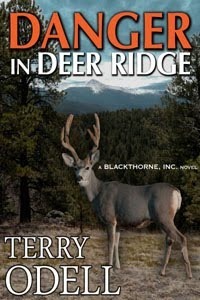 When I started writing, my first publications were with e-publishers, so I've certainly been aware of the digital market from its infancy. I have several titles from my back list that I decided to publish independently, but I recently decided that I would bypass a publisher for my next book. It wasn't an easy decision, but I thought I'd share some of my reasoning, as well as the pros, cons, and potential pitfalls.
When I started writing, my first publications were with e-publishers, so I've certainly been aware of the digital market from its infancy. I have several titles from my back list that I decided to publish independently, but I recently decided that I would bypass a publisher for my next book. It wasn't an easy decision, but I thought I'd share some of my reasoning, as well as the pros, cons, and potential pitfalls.
First: I'd hoped to add two more of my back list titles, but I have yet to get the official reversion of rights from that publisher, so they've been relegated to the back burner.
Second: my two short stories aren't due out in an anthology until August, and based on what I've seen with that publisher, it's not a firm release by any means.
Third: I'd already written the fourth book in my Blackthorne, Inc. series, and had to decide if I should submit it to the publisher.
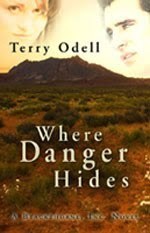 Although I have a new release, WHERE DANGER HIDES, it's a hard cover, which means its expensive, and since there's no digital version, I'm aware that it's going to be a hard sell. Heck, I don't buy full-price hard covers, so I wouldn't expect a huge number of sales.
Although I have a new release, WHERE DANGER HIDES, it's a hard cover, which means its expensive, and since there's no digital version, I'm aware that it's going to be a hard sell. Heck, I don't buy full-price hard covers, so I wouldn't expect a huge number of sales.
The issues:
1. Five Star publishes only in hard cover, and they have an extremely limited distribution system, targeting only the library market.
2. They publish a very small number of new books per year, so there's a long 'wait' between books even if they do buy one.
3. My second book with them, WHERE DANGER HIDES was just released, but the third won't come out until April of 2012. If I submitted a 4th, the earliest I could expect to see it would be 2013. Now, if they paid a substantial advance, the one book a year schedule might work, but they don't.
After some consideration, I decided that I would publish book 4, DANGER IN DEER RIDGE myself, even before book 3 was released. As I wrote it, I made sure that this book wouldn't contain spoilers for the "previous" books, although members of my covert ops team appear in all the books. Also, this book brings back characters from the second book, which IS already out.
Pros:
No lengthy wait time.
Keeps "new" material in front of readers.
Royalty payments come directly to me.
It's not as much of a 'suspense' as the other books, and the 'covert ops' side of things is less of a focus, so it's quite likely the publisher wouldn't have acquired it anyway, since they no longer have a romance imprint.
Cons:
To ensure quality, I paid a free-lance editor and a cover artist out of pocket. I also made the decision to keep the cover "similar" in tone to the other Blackthorne books, even though it's not an obvious "romantic suspense." And because I used photographs I'd taken, I saved some money there.
I had to deal with the other things a publisher normally does. In the case of an e-book, that means formatting it for the various outlets (and there are different requirements for each). It also means I'm solely responsible for marketing.
The book is technically book 4 in the series, although I wrote it as a stand alone, given that the publisher considers only one book at a time. With book 1 out as an e-book, after rights reverted to me, and book 2 out only in hard cover, I'm looking at two totally different markets. But book 3 is a year away, and there are those (myself included) who don't like to read "out of order" even though you don't need to read any of the previous books. The kicker for me was that although the publisher grants e-rights to authors, they have to wait a year after release to exercise them.
There's still the impression that a self-published book isn't going to be as "good" as one published by a traditional publisher, either print or digital. "Did you self-publish?" seems to carry the unspoken, "because it's not good enough to go elsewhere."
It's not always a simple "click upload and your book appears" situation. As of this writing, my book doesn't show up on the Kindle site if you go to my author page, although if you search on the title, it's there. The Barnes & Noble site hasn't uploaded my cover yet. And, even when everything's done and "pretty", without a huge following, people won't find my books unless they're actively looking for them. I'm hoping these are simply the 'normal' issues when uploading new books.
Pitfalls:
I won't sell enough copies to recoup my investment.
The time required to keep an e-book visible amidst the masses of new books, and the competition with "big names" who are now going the indie route for backlists and original material is prohibitive. And the rule of thumb is, the more books you have to offer, the better your sales will be. But if you have to spend your time marketing and promoting, where is the time to write more books?
So, this is kind of an experiment. Will I lose money? Break even? Come out ahead? I'll be waiting to see.
If you've read this far, thanks. A few words about the book. To see a blurb, click here. To read the first chapter, click here. Buy links are at either site.
And When Danger Calls, Book 1 in the series, has been reduced to 99 cents. Another experiment to see if that price point will generate enough sales, and also to see if there's crossover to my other books. Buy links here.
Tomorrow, author Lillian Stewart Carl will be here. Her topic: Real Men Wear Kilts. Don't want to miss that one, do you?
First: A very Big Thank You to those who have served to protect our country.
Next: Tomorrow is the last day for my May contest, given the dearth of entries, it's likely to be the last contest I run here for a while. Click the contest tab to enter.
And, lastly, Blogger's comment feature is acting up. I'm switching to the pop up window option to see if that helps.
 When I started writing, my first publications were with e-publishers, so I've certainly been aware of the digital market from its infancy. I have several titles from my back list that I decided to publish independently, but I recently decided that I would bypass a publisher for my next book. It wasn't an easy decision, but I thought I'd share some of my reasoning, as well as the pros, cons, and potential pitfalls.
When I started writing, my first publications were with e-publishers, so I've certainly been aware of the digital market from its infancy. I have several titles from my back list that I decided to publish independently, but I recently decided that I would bypass a publisher for my next book. It wasn't an easy decision, but I thought I'd share some of my reasoning, as well as the pros, cons, and potential pitfalls.First: I'd hoped to add two more of my back list titles, but I have yet to get the official reversion of rights from that publisher, so they've been relegated to the back burner.
Second: my two short stories aren't due out in an anthology until August, and based on what I've seen with that publisher, it's not a firm release by any means.
Third: I'd already written the fourth book in my Blackthorne, Inc. series, and had to decide if I should submit it to the publisher.
 Although I have a new release, WHERE DANGER HIDES, it's a hard cover, which means its expensive, and since there's no digital version, I'm aware that it's going to be a hard sell. Heck, I don't buy full-price hard covers, so I wouldn't expect a huge number of sales.
Although I have a new release, WHERE DANGER HIDES, it's a hard cover, which means its expensive, and since there's no digital version, I'm aware that it's going to be a hard sell. Heck, I don't buy full-price hard covers, so I wouldn't expect a huge number of sales.The issues:
1. Five Star publishes only in hard cover, and they have an extremely limited distribution system, targeting only the library market.
2. They publish a very small number of new books per year, so there's a long 'wait' between books even if they do buy one.
3. My second book with them, WHERE DANGER HIDES was just released, but the third won't come out until April of 2012. If I submitted a 4th, the earliest I could expect to see it would be 2013. Now, if they paid a substantial advance, the one book a year schedule might work, but they don't.
After some consideration, I decided that I would publish book 4, DANGER IN DEER RIDGE myself, even before book 3 was released. As I wrote it, I made sure that this book wouldn't contain spoilers for the "previous" books, although members of my covert ops team appear in all the books. Also, this book brings back characters from the second book, which IS already out.
Pros:
No lengthy wait time.
Keeps "new" material in front of readers.
Royalty payments come directly to me.
It's not as much of a 'suspense' as the other books, and the 'covert ops' side of things is less of a focus, so it's quite likely the publisher wouldn't have acquired it anyway, since they no longer have a romance imprint.
Cons:
To ensure quality, I paid a free-lance editor and a cover artist out of pocket. I also made the decision to keep the cover "similar" in tone to the other Blackthorne books, even though it's not an obvious "romantic suspense." And because I used photographs I'd taken, I saved some money there.
I had to deal with the other things a publisher normally does. In the case of an e-book, that means formatting it for the various outlets (and there are different requirements for each). It also means I'm solely responsible for marketing.
The book is technically book 4 in the series, although I wrote it as a stand alone, given that the publisher considers only one book at a time. With book 1 out as an e-book, after rights reverted to me, and book 2 out only in hard cover, I'm looking at two totally different markets. But book 3 is a year away, and there are those (myself included) who don't like to read "out of order" even though you don't need to read any of the previous books. The kicker for me was that although the publisher grants e-rights to authors, they have to wait a year after release to exercise them.
There's still the impression that a self-published book isn't going to be as "good" as one published by a traditional publisher, either print or digital. "Did you self-publish?" seems to carry the unspoken, "because it's not good enough to go elsewhere."
It's not always a simple "click upload and your book appears" situation. As of this writing, my book doesn't show up on the Kindle site if you go to my author page, although if you search on the title, it's there. The Barnes & Noble site hasn't uploaded my cover yet. And, even when everything's done and "pretty", without a huge following, people won't find my books unless they're actively looking for them. I'm hoping these are simply the 'normal' issues when uploading new books.
Pitfalls:
I won't sell enough copies to recoup my investment.
The time required to keep an e-book visible amidst the masses of new books, and the competition with "big names" who are now going the indie route for backlists and original material is prohibitive. And the rule of thumb is, the more books you have to offer, the better your sales will be. But if you have to spend your time marketing and promoting, where is the time to write more books?
So, this is kind of an experiment. Will I lose money? Break even? Come out ahead? I'll be waiting to see.
If you've read this far, thanks. A few words about the book. To see a blurb, click here. To read the first chapter, click here. Buy links are at either site.
And When Danger Calls, Book 1 in the series, has been reduced to 99 cents. Another experiment to see if that price point will generate enough sales, and also to see if there's crossover to my other books. Buy links here.
Tomorrow, author Lillian Stewart Carl will be here. Her topic: Real Men Wear Kilts. Don't want to miss that one, do you?
Published on May 30, 2011 04:00
May 28, 2011
Half Price Books

A great time to stock up on books -- as long as you pay with a credit card or paypal, you'll get a 50% rebate on all purchases from All Romance eBooks. And, I've got a brand new Blackthorne, Inc. book that just went live. It's discounted, and I've also put When Danger Calls on sale for 99 cents. Details about it Monday, but meanwhile, you can check out DANGER IN DEER RIDGE here.
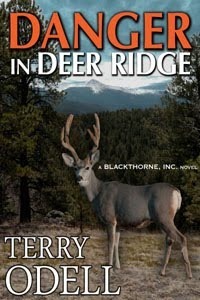
Published on May 28, 2011 09:05



